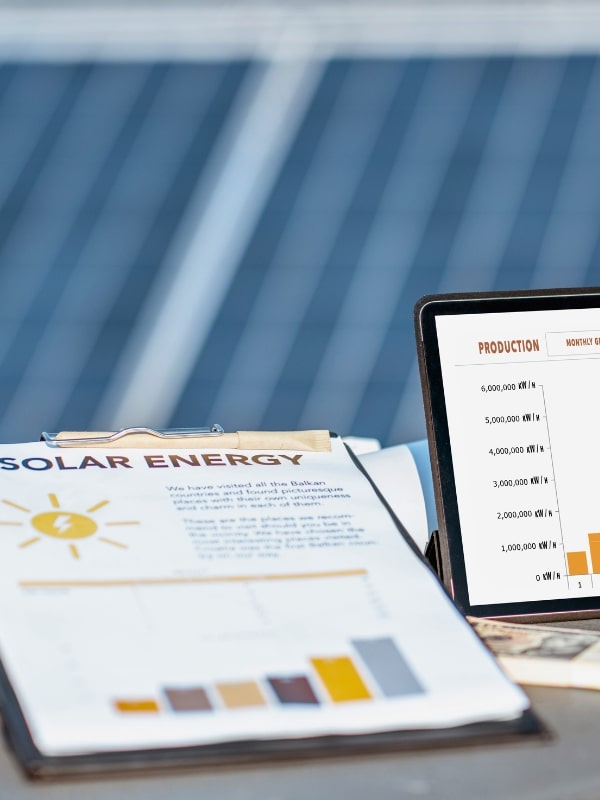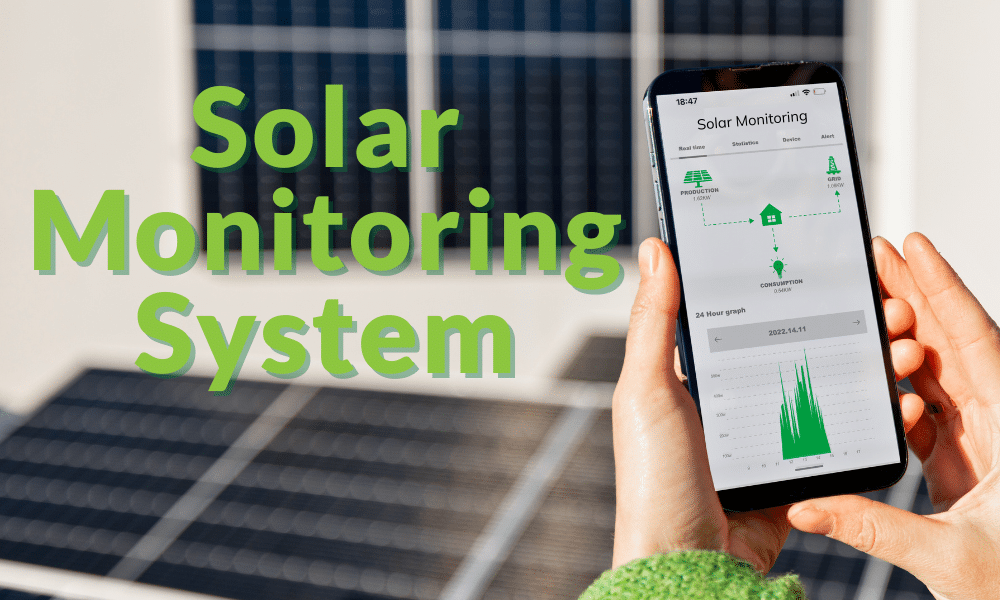Harnessing the sun’s power for your home or business in Australia is a fantastic way to reduce your electricity bills and become more environmentally friendly. But how do you ensure your solar system is performing optimally? Enter solar monitoring systems – the unsung heroes of maximising your solar power investment.
In this guide, we’ll delve into the world of solar monitoring systems in Australia, equipping you with the knowledge to choose the perfect one for your needs.
Ready to upgrade your solar systems and take your energy savings to the next level? Embrace the energy efficiency revolution by upgrading your solar systems and adding solar battery storage, inverters, and more with Energy Matters. Energy Matters has been recognised for its continued excellence in the Australian solar industry. We provide our customers with high-quality resources, insight, and access to reputable solar quotes.
With Energy Matters’ 3 free solar quotes, you can compare plans from pre-qualified and vetted installers in your area and find the perfect solution for your home and business. Harness the sun’s power and save money on electricity bills while reducing environmental impact. Let Energy Matters guide you towards a brighter, more sustainable future.
Understanding solar monitoring systems
Solar monitoring systems track the performance of your solar photovoltaic (PV) system. They typically consist of hardware components that collect data and a software platform that displays and analyses it. The hardware can include:
- Sensors: These are installed on your inverter or directly on the panels to measure factors like voltage, current, and power output.
- Data loggers: These devices collect and store the data from the sensors.
- Communication gateways: These transmit the collected data to the software platform, often via Wi-Fi or cellular connection.
The software platform is the user interface where you can access and analyse the collected data. Features can vary, but standard functionalities include:
- Real-time and historical data visualisation: See your system’s energy production in real-time and track trends over days, weeks, months, or even years.
- Performance analysis: Identify peak and low production periods, allowing you to optimise energy usage.
- Alert systems: Receive notifications for potential issues like system failures or reduced production.
- Comparison tools: Compare your system’s performance to expected output based on weather conditions and historical data.
- Energy cost savings tracking: Monitor your savings on electricity bills due to solar energy generation.
The power of knowledge: Unveiling the benefits of solar monitoring
Solar monitoring systems offer a treasure trove of benefits beyond simply keeping an eye on your panels. Here are some key advantages to consider:
- Maximise energy production: By tracking your system’s performance in real-time, you can identify any potential issues hindering power generation. These could include partial shading on your panels or solar inverter malfunctions. Early detection allows for prompt repair or maintenance, ensuring your system always operates at peak efficiency.
- Track energy consumption: Not only can you monitor how much energy your solar panels generate, but some advanced systems also allow you to track your overall household or business energy consumption. This valuable insight empowers you to identify areas where you can reduce consumption and optimise your energy use.
- Boost savings: By understanding your energy habits and solar production, you can make informed decisions to maximise self-consumption and reduce your reliance on the grid. This translates to significant savings on your electricity bills.
- Identify faults early: Solar monitoring systems often detect potential problems before they escalate into significant issues. This proactive approach can save you time, money, and frustration in the long run.
- Improved system maintenance: Alerts allow for early detection of potential problems, prompt troubleshooting, and repairs, preventing minor issues from escalating into costly breakdowns.
- Informed energy consumption habits: By visualising your energy production and usage patterns, you can adjust your habits to utilise solar power effectively. For instance, running appliances during peak production can maximise self-consumption and reduce reliance on grid electricity.
- Peace of mind: Knowing your solar system is optimal provides peace of mind. Rest assured that your investment performs as expected and contributes to a sustainable future.
Choosing the best solar monitoring system: Tailoring to your needs
With many solar monitoring systems available in Australia, selecting the right one requires careful consideration of your specific needs and budget. Here are some key factors to ponder:
System type
Here’s a breakdown of the common types of solar monitoring systems available in Australia:

- Inverter monitoring: This is the most common type, and it directly integrates with your solar inverter. It provides primary data like real-time power generation, total energy produced, and system status.
- Generation meter monitoring: This system uses a separate meter to track the total energy produced by your solar panels. It’s a good option for existing systems lacking built-in tracking.
- Solar inverter or battery monitoring via app/website: Many inverter and battery manufacturers offer smartphone apps or web portals that provide detailed data on your system’s performance. This can include historical data, performance graphs, and fault alerts.
- Advanced monitoring systems: These comprehensive systems offer real-time data on various aspects of your solar system, including individual panel performance (with microinverters) and detailed system health diagnostics.
Data monitoring depth
Consider the level of detail you require. Basic systems provide fundamental data points, while advanced options offer in-depth insights like historical trends, performance analysis, and even individual panel monitoring (with microinverters).
System compatibility
Ensure your chosen system is compatible with your existing solar inverter and any other components.
Connectivity
How will the system communicate? Options include Wi-Fi, cellular, and even satellite for remote locations. Choose the method that provides reliable connectivity for your setup.
User interface
A user-friendly interface is crucial. Look for a system with a clear and intuitive dashboard that displays data in a way that’s easy to understand, even for non-technical users. Mobile apps for remote monitoring are also a valuable bonus.
Scalability
Consider your future needs. If you plan to expand your solar system, choose a monitoring system to accommodate the growth.
Mobile app integration
For on-the-go convenience, consider systems that offer mobile apps for monitoring your solar system from your smartphone or tablet.
Additional features
Some systems offer advanced features like fault alerts, energy cost calculations, and integration with smart home platforms. Consider if these functionalities are essential to you.
Budget
Solar monitoring systems range in price depending on the features offered. Determine your budget and prioritise the functionalities that are most valuable to you.
Finding the perfect fit: Resources for Australians
The Clean Energy Regulator (CER) maintains a list of approved monitoring devices for solar systems in Australia. This is a good starting point to ensure your chosen system meets the necessary regulatory standards https://cer.gov.au/.
Another excellent way to find the right monitoring system is to consult with reputable solar installers in Australia. They can assess your needs and recommend systems compatible with your existing setup.

Beyond the system: Leveraging solar monitoring benefits
Once you’ve installed your solar monitoring system, the real magic begins. Here are some tips to maximise its benefits:
- Set goals: Establish goals for your energy production and consumption based on the data you gather. This will help you track your progress and identify areas for improvement.
- Monitor regularly: Make it a habit to check your monitoring system regularly. Look for any trends or anomalies that might indicate potential issues.
- Take action: If you notice any concerning data points, don’t hesitate to address them promptly. Contact your solar installer for assistance in troubleshooting or performing maintenance.
- Optimise usage: Utilise the information from your monitoring system to adjust your energy consumption habits. For example, use high energy.
By carefully considering your needs, budget, and existing system, you can select the best solar monitoring system to optimise your solar power generation and maximise the benefits of your investment. With the valuable insights solar monitoring provides, you can enjoy the peace of mind of knowing your solar system is functioning efficiently and delivering clean, renewable energy to your home or business.
Are you looking to save money on your electricity bills and reduce your carbon footprint? Solar energy is the perfect solution! Energy Matters is the leading supplier of solar quotes in Australia due to its vast partnership network of high-quality installers. With Energy Matters, you can be sure you’re getting the best possible deal on solar energy.
Energy Matters helps Australian home and business owners receive personalised solar quotes through our large network of high-quality solar installers. With Energy Matters, you can be sure you’re getting the best possible deal on solar energy. We only work with reputable solar firms with a proven track record of delivering high-quality solar systems.













































